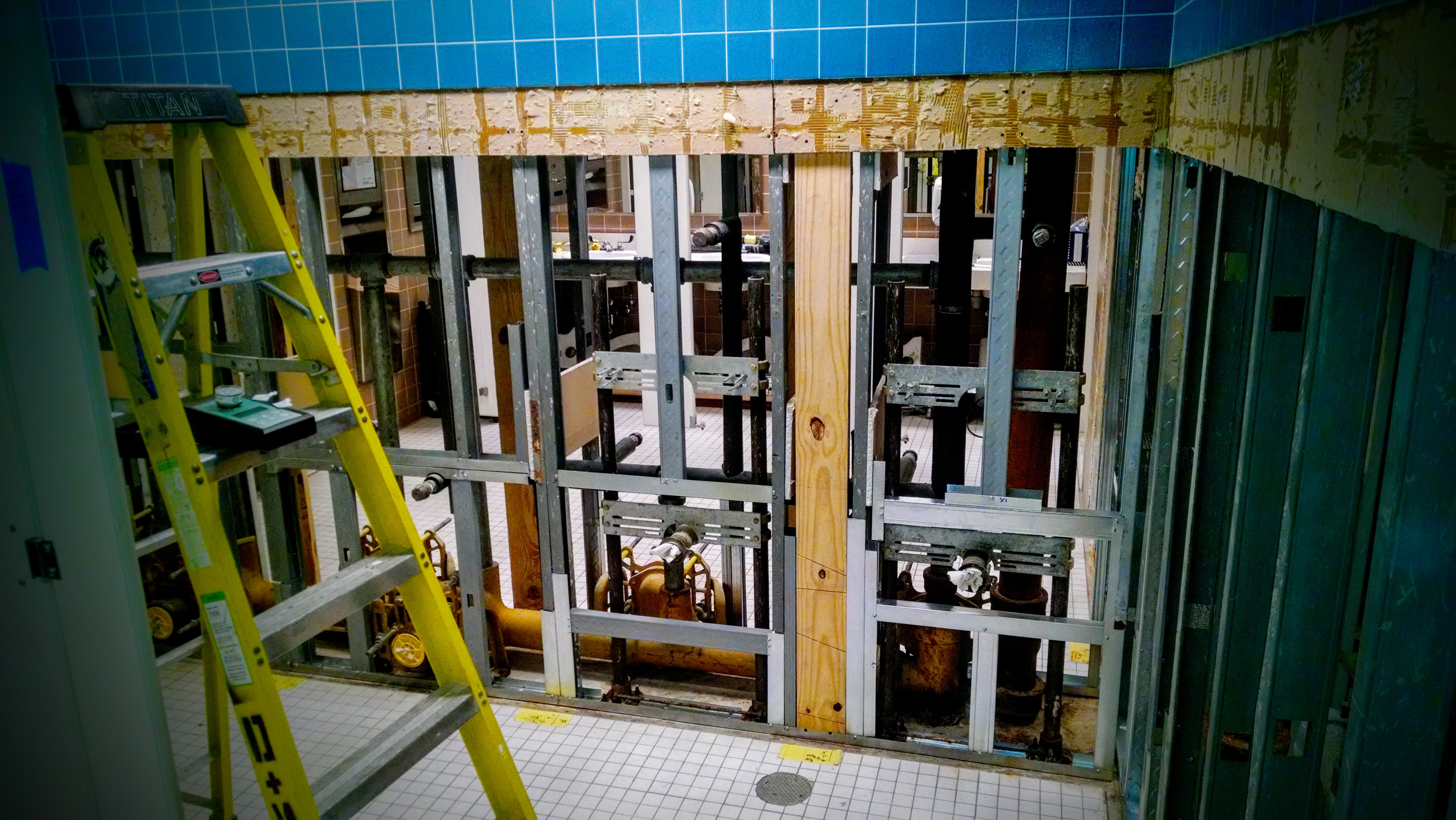Indoor Air Quality (IAQ) Evaluation: If the walls could talk?
 Faulty connections, the source of mold growth uncovered during renovations. This view shows the source after the mold remediation was conducted.
Faulty connections, the source of mold growth uncovered during renovations. This view shows the source after the mold remediation was conducted. Life as we know it would turn upside down. Our jobs as environmental consultants and industrial hygienists would become obsolete. The best part of our job is investigating the unknown, uncovering what lies behind the walls, in building materials, or underneath the ground to discover potential health and environmental risks and then helping to solve those problems. As property owners, sometimes the problem is located right in front of our eyes, but our view is narrowed by our routines causing us to completely miss it. A preliminary assessment of your facility may help you locate the root cause of employee health complaints, but it may be necessary to conduct a formal indoor air quality (IAQ) evaluation to isolate the cause, especially when it comes to mold growth or materials emitting volatile organic compounds (VOCs). A preliminary building assessment will help identify basic problem areas that can be confirmed through a thorough IAQ evaluation. A preliminary assessment may include the following steps:
- Review maintenance logs to ensure routine maintenance has been completed on HVAC systems
- Ensure mechanical ventilation systems are on early enough to reach full capacity prior to work starting
- Evaluate general cleanliness in suspect areas
- Identify fresh air intakes and exhausts, ensuring they’re not located too close together or that vehicles are not idling near a fresh air intake
- Fix all leaks upon discovery
- Remove any porous materials damaged by water
If you are unable to narrow down the problem, or need data to document the identified problem source, it’s important to have professional industrial hygienists evaluate the situation and perform IAQ testing to pinpoint the root cause. Industrial hygienists have tools to screen a variety of IAQ parameters that are known to cause health problems but are not always visible to the naked eye. It’s important to identify the problem, for example mold growth behind restroom walls, before renovations or major maintenance activities take place. Contractors will be better equipped to manage those risks during construction activities to ensure that mold or other contaminants do not spread throughout your facility causing more problems.
On this field day Friday, we have a rare chance to look through the walls after mold remediation has been conducted. We’re performing air clearance testing to ensure that the mold spores have been reduced to safe levels prior to reuse and that the source of the mold growth, leaking seals, have been fixed appropriately. Our job, as industrial hygienists would be way too easy if the walls could talk.
